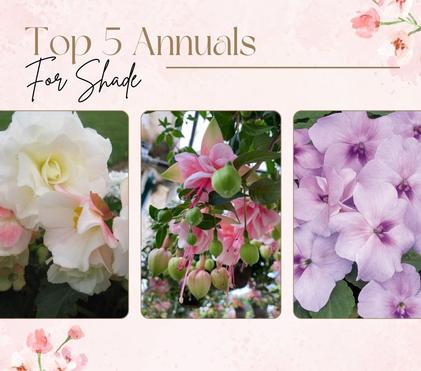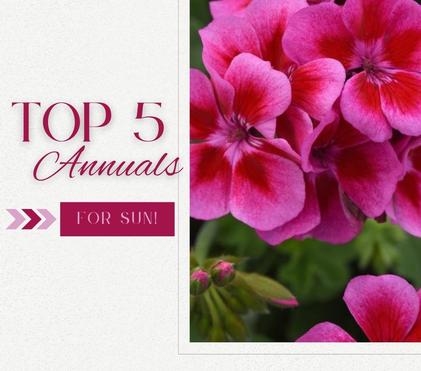Perennial Lifespan - PSA: Not all perennials last forever!
When we think about gardening, we generally categorize plants into two tidy little boxes: annuals and perennials. Annuals are the plants that do not overwinter; we plant them in the spring, and they die in the fall as things get frosty outside (live fast, die young). Perennials, on the other hand, will overwinter and come back each spring, year after year — or so we’ve been told. It’s not an untrue definition, but it’s by no means a complete guide on how to think about perennials, especially when living in colder climates like Edmonton, Alberta. So let’s get into it!

Photo Credit: Debbie Watts
There are a few things to think about with perennials: lifespan, zone, and growing conditions. Some perennials simply have a shorter lifespan than others. Even in the perfect growing conditions they may only overwinter 2-5 years (such as Echium amoenum Red Feathers, or Gaillardia Arizona Apricot Blanket Flower). Any plant that lives more than two years is considered a perennial. Some perennials, such as Hollyhocks, have a shorter life span, but will self seed if you let them. You can also cut them back and save the seed pods! You may steer clear of short lived perennials because it may seem like they have a low “return on investment,” but don’t be too hasty, there are many positives of short lived perennials. Many short lived perennials have vigorous, colorful blooms, interesting foliage, and reach their peak potential earlier than longer lived perennials. Because they often have more robust blooms, this attracts more pollinators into the garden which benefits all your plants. They also give you the freedom to switch things up every few years as gardening trends change — after all, trying new things is half the fun! If you’re wondering how long your perennials are expected to live, we’ve got you covered. We recently posted the estimated life span of the perennials we currently carry on our website.
Another big factor is the hardiness zone. When we talk about zones, we’re really just talking about the climate. Because of our harsher winters, Edmonton is considered Zone 3. Many plants will not overwinter here, even though they may overwinter in other zones, such as Achillea millefolium Milly Rock™ Rose (Yarrow). Although it can live up to 10 years in Zones 4–9, it often will only live 3–5 years in Zone 3 — but it’s not a hard and fast rule. Some people may experience microclimates in their yard: small spots that offer slightly different growing conditions. This may be a warmer spot next to your house, a sloping spot where snow and frost settle, or a sheltered spot along a tree line. There are many factors that affect growing conditions in one’s yard — even neighbours! While you may not know all the microclimates in your yard, it’s important to know which way your yard is facing and how much sun, wind, water, and drainage the different areas of your yard get. Start here, then as you gain gardening experience, you will learn the subtleties of your yard. If you do choose to plant a perennial that is Zone 4 and up, just be prepared that it may not overwinter or live as many years in our colder climate.
Knowing how to properly care for your plants is essential. It’s not just about sun vs. shade. Here are a few other things to consider:
- Soil and Moisture – Does it prefer rich, fertile soil, rocky soil, moist conditions, or well-drained conditions?
- Freeze-Thaw Cycle – Snow covering provides insulation during the winter, which helps keep the roots of perennials warm. If they are planted in a spot that doesn’t have much snow covering or goes through a few freeze-thaw cycles (various spots can experience a January melt), you can cover the ground with a thicker layer of mulch in the fall for extra root protection. Alternatively, you can gather some leaves from the yard and cover the spot that has experienced premature snow melt. To keep the leaves in place, cover them with some small tree branches for extra cover.
- Dividing – Some perennials will lose vigor with time, such as Dianthus. The center clump will die out, surrounded by new growth on the outside. Dividing the plant can rejuvenate it and promote continued growth in the coming year. It’s important to note that some perennials can have very large roots, which makes dividing difficult. You may need some larger tools (spade, shovel, gardening fork, etc.) and an extra hand to get the job done.
If planting and caring for perennials seems a little overwhelming, we are here to help! Our website contains our full list of perennials including preferred growing conditions, life-span, and care instructions. If you ever have questions about caring for your perennials we are happy to help! Bring your questions with you in May when we open for the season or send us an email. For those who are unsure where to start with perennial gardening you can check out our blogs on the top 5 perennials for sun and shade or book a landscape design consultation in the spring.
Happy Gardening!

